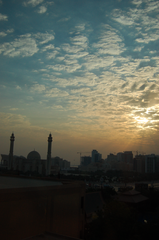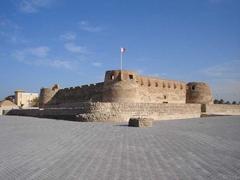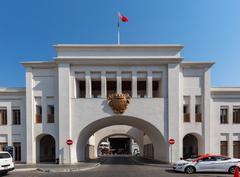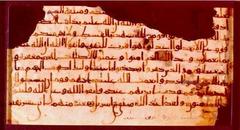Pearl Roundabout Manama, Bahrain: Visiting Hours, Tickets, and Travel Guide
Date: 14/06/2025
Introduction
Once the symbolic heart of Manama, the Pearl Roundabout served as a powerful emblem of Bahrain’s national identity and Gulf unity. Erected in 1982 to commemorate the third Gulf Cooperation Council (GCC) summit, the monument featured six iconic dhow-shaped sails supporting a large white pearl, capturing Bahrain’s historic connection to the pearl-diving industry and the unity of the six GCC states (Wikipedia; Ibraaz). Its central location near landmarks such as the Bahrain Financial Harbour and Bahrain World Trade Center made it both a civic and cultural focal point for the city.
Over time, the Pearl Roundabout’s significance expanded beyond its architectural grandeur. It became a symbol of tradition, modernity, and, most notably, sociopolitical change during the 2011 Bahraini uprising. Today, although the monument has been demolished and the site is now known as Al Farooq Junction, its legacy persists in Bahrain’s collective memory and continues to attract visitors interested in the nation’s complex history.
This guide offers a comprehensive look at the Pearl Roundabout’s history, cultural significance, transformation, and practical visitor information, including travel tips, accessibility, and nearby attractions (TripJive; Gulf News).
Table of Contents
- Origins and Construction of the Pearl Roundabout
- Architectural Design and Symbolic Elements
- Civic and Cultural Impact
- The 2011 Bahraini Uprising and the Monument’s Transformation
- Demolition and Aftermath
- The Site Today: Al Farooq Junction
- Visitor Information: Hours, Tickets, and Accessibility
- Nearby Attractions
- Travel Tips and Cultural Considerations
- Frequently Asked Questions (FAQ)
- Conclusion
- References
Origins and Construction of the Pearl Roundabout
The Pearl Roundabout—also known as Lulu Roundabout—was built in 1982 to mark Bahrain’s hosting of the GCC’s third annual summit (Wikipedia). Its strategic placement in Manama’s financial district, adjacent to major civic and commercial centers, underscored its significance as a site of national pride and regional cooperation (Disappointed Tourist). The roundabout quickly became a key urban landmark, appearing on currency and in tourism materials (Ibraaz).
Architectural Design and Symbolic Elements
The monument’s design was rich in symbolism. Six stylized sails—evoking traditional dhows—represented the six GCC member states: Bahrain, Kuwait, Oman, Qatar, Saudi Arabia, and the United Arab Emirates. At their convergence stood a large, white cement pearl, a nod to Bahrain’s pearling heritage and maritime culture (TripJive; OHCHR). The twelve-sided reflecting pool at the base emphasized the importance of water and the sea in Bahrain’s history (TripJive).
Civic and Cultural Impact
For nearly three decades, the Pearl Roundabout embodied Bahrain’s aspirations and progress. Its image adorned the 500 fils coin and numerous promotional materials, reinforcing its role as a national symbol (Ibraaz). Surrounded by prominent buildings and luxury residences, the monument bridged the old and new faces of Manama (Wikipedia). However, as Manama’s skyline evolved, the roundabout’s visual prominence waned, symbolizing the city’s shift towards modernization and economic development (Ibraaz).
The 2011 Bahraini Uprising and the Monument’s Transformation
In early 2011, during the Arab Spring, the Pearl Roundabout became the epicenter of mass demonstrations calling for political reforms and greater freedoms (Ibraaz; OHCHR). Protesters reimagined the site as “Pearl Square,” transforming it into a symbol of resistance and hope. The monument’s meaning shifted—from a state-sanctioned emblem of unity to a grassroots icon of dissent (TripJive).
Demolition and Aftermath
On March 18, 2011, the Bahraini government demolished the Pearl Monument in an effort to quell protests and erase its symbolism (Gulf News). The roundabout was replaced with a modern traffic intersection named Al Farooq Junction. All public references to the monument were removed from the cityscape, and the site’s history became politically sensitive (OHCHR; Disappointed Tourist).
The Site Today: Al Farooq Junction
Today, the former Pearl Roundabout site functions as a major multi-lane intersection, with no traces of the original monument or commemorative signage (ABNA24). Known as Al Farooq Junction, it is integrated into Manama’s modern infrastructure, facilitating heavy vehicle traffic and connecting several central districts (We Will Nomad). The absence of the monument is a silent testament to both its contested legacy and the country’s rapid urban transformation.
Visitor Information: Hours, Tickets, and Accessibility
Location: Central Manama, near Bahrain Financial Harbour and Bahrain World Trade Center.
Visiting Hours: The junction is a public roadway, accessible 24/7. There are no official visiting hours or ticket requirements.
Accessibility:
- By Car/Taxi: The site is best viewed from a vehicle. Taxis and ride-sharing apps are recommended due to the lack of pedestrian infrastructure.
- By Public Transport: Buses pass nearby, but no dedicated stops are available for tourists at the junction.
- On Foot: Pedestrian access is limited and not recommended due to safety concerns and the lack of sidewalks.
Facilities: There are no parking areas, visitor centers, or amenities at the site.
Guided Tours: While no official tours focus solely on Al Farooq Junction, some broader city tours may reference its historical significance within the context of Manama’s history (TripJive; We Will Nomad).
Nearby Attractions
Although the former Pearl Roundabout no longer exists, Manama offers a wealth of cultural and historical sites worth exploring:
- Bab Al Bahrain: The historic gateway to Manama’s bustling souq (We Will Nomad).
- Bahrain National Museum: Exhibits on Bahrain’s rich history, including its pearl-diving heritage.
- Al Fateh Grand Mosque: One of the world’s largest mosques, open to visitors of all faiths.
- Bahrain Fort (Qal’at al-Bahrain): A UNESCO World Heritage Site with archaeological significance.
- Pearling Path: A UNESCO-listed cultural trail celebrating Bahrain’s pearling legacy (Pearling Path).
Travel Tips and Cultural Considerations
- Respect Local Sensitivities: The site and its history remain politically sensitive. Avoid political discussions or demonstrations at or near the junction.
- Photography: Discreet photography from inside vehicles is usually acceptable. Avoid photographing security personnel or government buildings.
- Transport: Taxis and ride-sharing apps are the safest and most convenient options.
- Safety: Remain aware of your surroundings, especially due to heavy traffic.
- Alternative Experiences: Focus your exploration on Bahrain’s museums, souqs, and historical landmarks for deeper cultural engagement.
Frequently Asked Questions (FAQ)
Q: Does the Pearl Roundabout still exist?
A: No, the monument was demolished in 2011. The site is now Al Farooq Junction, a busy traffic intersection.
Q: Are there visiting hours or tickets for the Pearl Roundabout?
A: No, the site is a public roadway accessible at all times, with no ticket requirements.
Q: Can I take photos at the site?
A: Discreet photography from a vehicle is generally acceptable, but avoid photographing government buildings or security personnel.
Q: Are there any memorials or plaques at the site?
A: No, the government has intentionally refrained from installing any commemorative markers or plaques.
Q: What are the best nearby attractions?
A: Bab Al Bahrain, Bahrain National Museum, Al Fateh Grand Mosque, Bahrain Fort, and the Pearling Path are all recommended.
Conclusion
The Pearl Roundabout’s story reflects the shifting tides of Bahrain’s identity, from a monument of unity and prosperity to a symbol of protest and resilience, and now to a site of urban transformation. While the physical monument is gone, its memory endures as a testament to the power of public symbols and the complexities of Bahrain’s modern journey. Travelers visiting Manama can witness this history firsthand by visiting Al Farooq Junction, and are encouraged to explore the city’s rich cultural and historical offerings for a deeper understanding of Bahrain’s past and present.
For up-to-date travel tips, guided tours, and cultural insights on Manama and Bahrain, download the Audiala mobile app and follow us on social media.
References
- Pearl Roundabout, Wikipedia
- Pearl Monument in Bahrain Torn Down, Gulf News
- Pearl Roundabout Manama: History, Significance, and Visitor Information, Ibraaz
- What is the Pearl Monument? A Bahrain Landmark, TripJive
- Destruction of Pearl Monument, OHCHR
- Visiting the Pearl Roundabout in Manama: History, 2011 Uprising, and Travel Tips, Disappointed Tourist
- Pearl Roundabout Manama: Visiting Hours, Tickets, and What to Expect at Al Farooq Junction, ABNA24
- Exploring Pearl Roundabout in Manama: History, Significance & Visitor Guide, Architectural Review
- Pearling Path: Testimony of an Island Economy, Pearling Path
- Manama Travel Guide and Attractions, We Will Nomad




